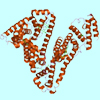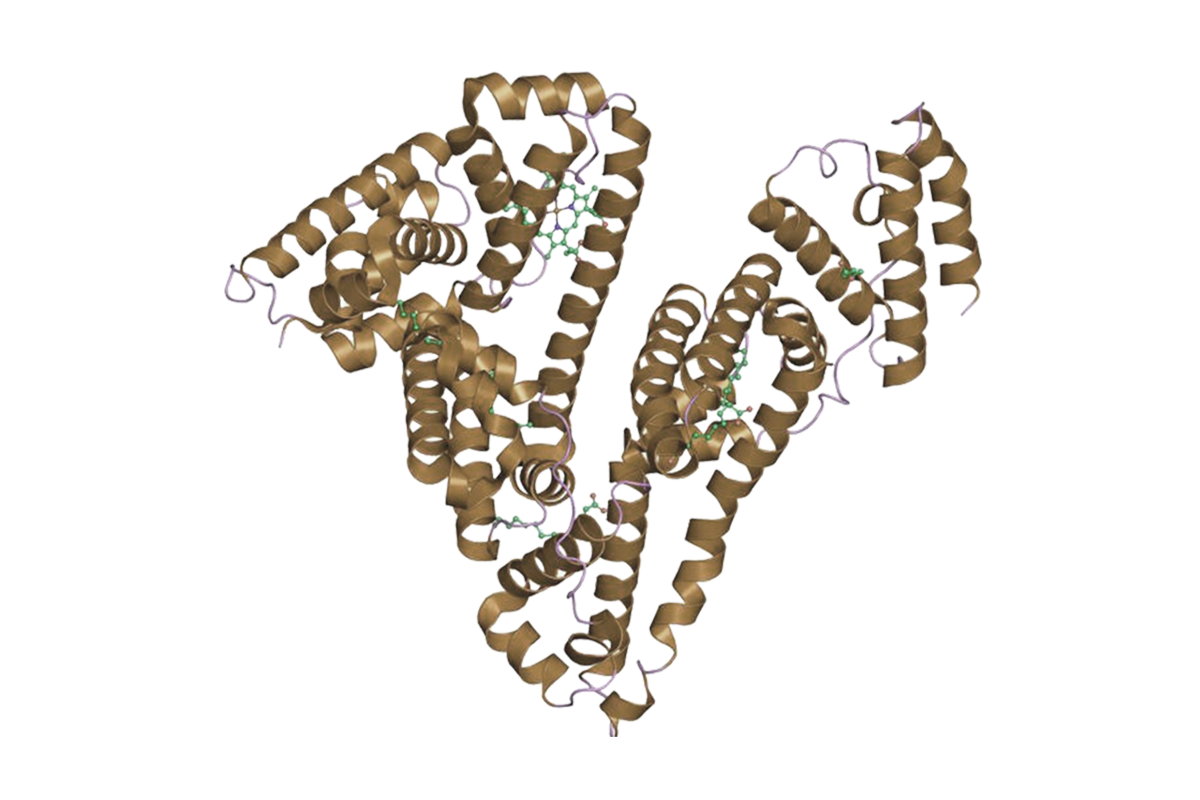Serum Albumin
Serum Albumin is the most abundant and interactive protein in human body. Albumin is synthesized by the liver. Albumin keeps fluid from leaking out of blood vessels, nourishes tissues, and transports hormones, vitamins, drugs, and substances like calcium throughout the body.
The clinical importance of Serum Albumin measurement can indicate more than one underlying pathological change. There are a range of disease causing decrease in serum albumin concentrations. It may be used in a variety of settings to help in diagnoses, disease progression and as a screen that may indicate the need for other kinds of testing. Reference serum albumin values range from 3.5-5.5 g/dL. [Low serum albumin levels and liver metastasis are powerful prognostic markers for survival in patients with carcinomas of unknown primary site]
| Pathological Change | Clinical Use |
|---|---|
| Decreased Synthesis | Assessment of nutritional status Assessment of hepatic function reserve |
| Increased Volume of distribution | Assessment of vascular integrity |
| Increased catabolism | Indication of prognosis of myeloma Nephrotic Syndrome Protein losing enteropathy |
| Alterations in Serum Albumin Concentration | Guide to albumin replacement Differential diagnosis of Oedema Assessment of concentration of bound ligands e.g. calcium, bilirubin |
Serum Albumin & Liver
Albumin is usually tested along with other tests, when a person has symptoms of a liver disorder, such as:
- Yellowing of eyes or skin (jaundice)
- Weakness, fatigue
- Unexplained weight loss
- Loss of appetite
- Abdominal swelling and/or pain
- Dark urine, light-colored stool
- Itching
Serum Albumin & Kidney Failure
This test may be ordered when a person has symptoms of nephrotic syndrome, such as:- Swelling or puffiness, particularly around the eyes or in the face, wrists, abdomen, thighs or ankles
- Urine that is foamy, bloody, or coffee-colored
- A decrease in the amount of urine
- Urinal problem
- Mid-back pain (flank), below the ribs, near where the kidneys are located
- High blood pressure (Hypertension)
Serum Albumin & Malnutrition
An albumin test is also used to check or monitor a person's nutritional status. However, since albumin concentrations respond to a variety of conditions in addition to malnutrition, a decrease in albumin needs to be evaluated carefully.
Serum Albumin & Cancer
A study published in Annals of Hematology examined the relationship between serum albumin levels and disease severity in multiple myeloma patients. Results showed that lower levels of serum albumin are associated with greater disease severity. The lower serum albumin group had lower levels of hemoglobin, the protein found in red blood cells that helps transport oxygen throughout the body. Low hemoglobin levels means that the bone marrow is overcrowded with myeloma cells and cannot produce the number of red blood cells that the body needs. [Serum Albumin Levels Indicate Severity Of Multiple Myeloma] [ Multiple myeloma: ESMO Clinical Practice Guidelines for diagnosis, treatment and follow-up]
Serum albumin is the most common marker for assessment of nutritional status in patients, thus making it a powerful utility as a prognostic indicator of cancer survival in cancer[Pretreatment serum albumin as a predictor of cancer survival: A systematic review of the epidemiological literature] . Ecological and observational studies suggest that low serum albumin is associated with higher mortality from cancer. Research conducted over the last decade or so has demonstrated that serum albumin levels (either considered alone or in combination with other parameters) can provide useful prognostic information in a variety of cancers. Serum albumin level is not only a window into the cancer patient’s nutritional status but also a useful factor for predicting patient prognosis. Lower levels of serum albumin are indicative of an ongoing systemic response that causes the loss of these proteins. The potential advantage of serum albumin level as a pretreatment prognostic factor in cancer patients is that it is inexpensive, reproducible and powerful. [Pretreatment serum albumin as a predictor of cancer survival: A systematic review of the epidemiological literature]
Serum Albumin & Critical Illness
Critical illness alters the distribution of albumin between the intravascular and extravascular compartments. There are also changes in the rates of synthesis and degradation of the protein. The serum albumin concentration will decrease, often dramatically, from early in the course of a critical illness. [The role of albumin in critical illness]
PathShodh’s Unique Serum Albumin Measurement Technique:
In the Pathology labs, Albumin is widely measured by bromocresol green (BCG) method. As per clinical literatures[When is serum albumin worth measuring?] this method is not very accurate and often overestimating albumin at low level.
PathShodh innovates a patent pending low cost and accurate POC technology for serum albumin measurement based on electrochemical principle. Serum albumin can be measured with PathShodh anuPath POC device with a drop of capillary whole blood sample without the serum extraction.
NOTE: Please contact us at info@pathsodh.com for the DEMO of HSA device.



